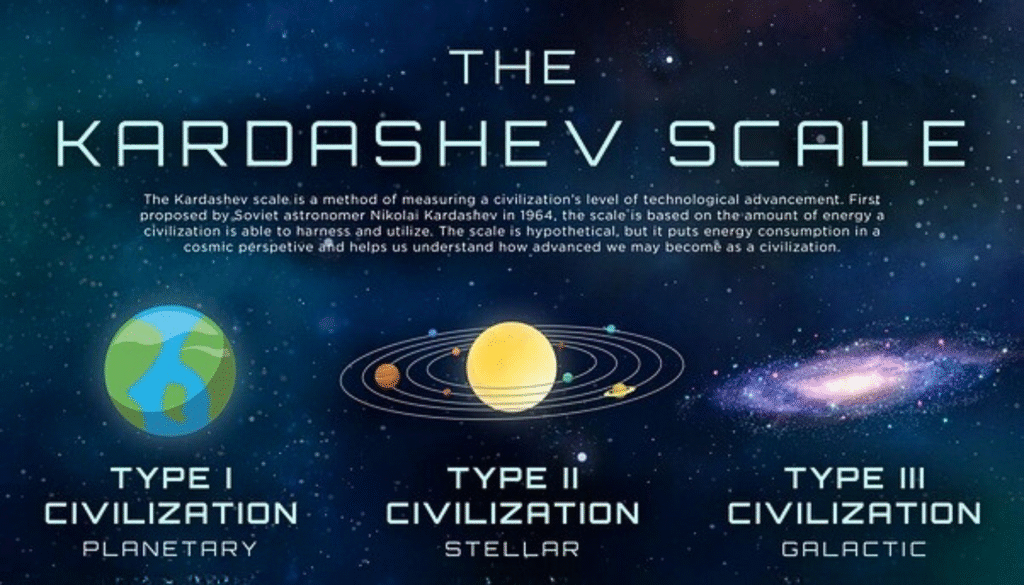The Kardashev Scale is a theoretical framework developed to measure a civilization’s level of technological advancement based on the amount of energy it can harness and use. It was proposed in 1964 by Soviet astrophysicist Nikolai Kardashev, who was investigating the possibility of detecting advanced extraterrestrial civilizations through their radio emissions. His idea was that the more advanced a civilization is, the more energy it requires, and thus, the more it would radiate or emit in detectable ways.

Kardashev’s original scale consisted of three categories:
- Type I Civilization – Also known as a planetary civilization, this type can harness all the energy available on its home planet. This includes resources such as wind, solar, geothermal, and nuclear energy. A Type I civilization would have full control over the planet’s systems, such as the weather, earthquakes, and possibly even volcanic activity. Earth is not yet a Type I civilization; we currently fall somewhere around 0.7 on the scale, as we are still dependent on fossil fuels and have not yet fully harnessed our planet’s energy potential.
- Type II Civilization – A stellar civilization that can harness the total energy output of its star. One of the most famous theoretical concepts for this is the Dyson Sphere—a hypothetical megastructure that surrounds a star and captures its energy. A civilization of this scale would have the ability to colonize other planets within its solar system and utilize the sun’s energy far more efficiently than humanity currently does.
- Type III Civilization – A galactic civilization capable of harnessing the energy of an entire galaxy. This would imply mastery over billions of stars and potentially entire star systems. Such a civilization would have the ability to manipulate matter and energy on an unimaginable scale and likely possess technologies far beyond our comprehension today.

The Kardashev Scale is logarithmic, meaning that moving from one type to the next involves an exponential increase in energy consumption. The energy requirements for each level are immense. For example, Type I would use about 10¹⁶ watts, Type II would use around 10²⁶ watts, and Type III about 10³⁶ watts.
While the scale is a useful thought experiment, it has been expanded and critiqued over the years. Some scientists and futurists have proposed adding Type IV (a civilization that uses energy on the scale of the entire universe) and even Type V (one that could manipulate multiverse-level phenomena). Others argue that the scale is too simplistic and overlooks other aspects of civilization, such as information processing, sustainability, or technological sophistication beyond just energy use.
Nevertheless, the Kardashev Scale remains a powerful concept in astrophysics and science fiction. It serves as a way to imagine the far-reaching possibilities of technological progress and to contextualize our own civilization’s development in the broader scope of cosmic evolution.



